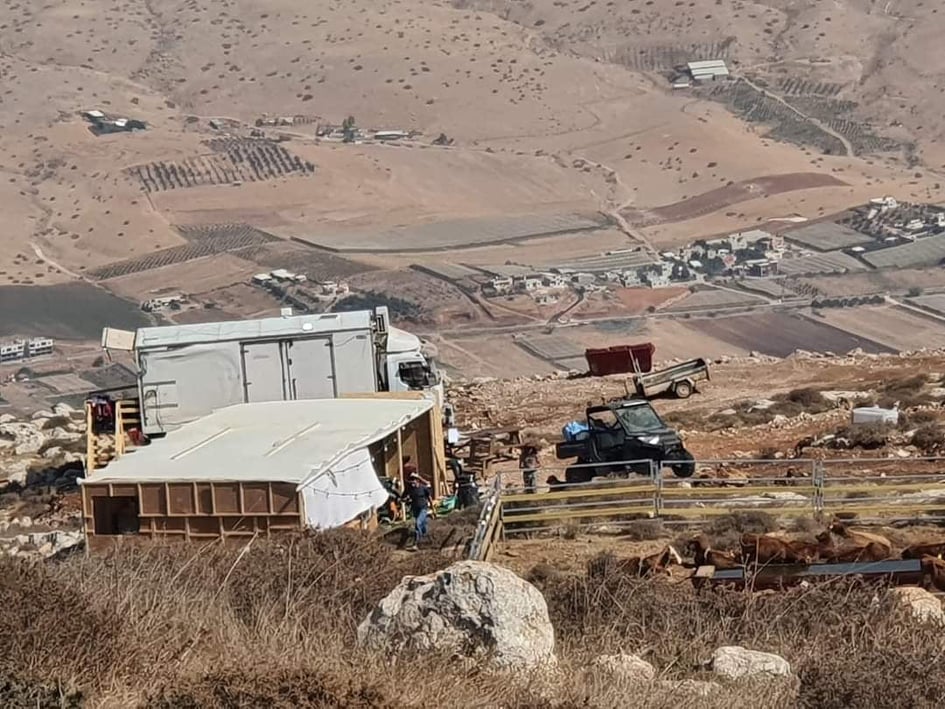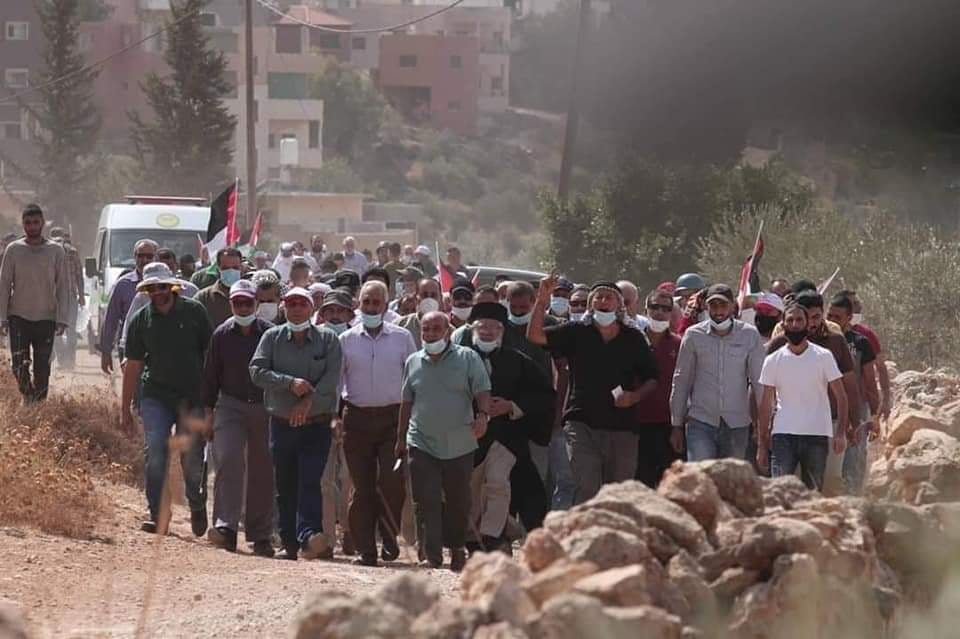In the location of the nine removed settler outposts, multitudes of unarmed Palestinians rallied for months, where they were subject to both Israeli soldiers’ and fanatic settlers’ aggression. In Mount al-Arma, two Palestinian minors, Mohammed Hamayel and Islam Dweikat were shot dead by Israeli soldiers last March during the peaceful protests took place in the area. In the rest of the areas tens of protestors were injured. The most recent protests where Palestinians removed a settler outpost was in Beit Dajan, Nablus district.

However, as settlers are adamant about stealing Palestinians’ lands they returned back to Beit Dajan and set up another outpost just one day after removing the previous one. Yet, Palestinians are more determined than settlers to reclaim their land and will continue their protests until the outpost is removed once again.

The illegal settler outpost in Beit Dajan.
Since the beginning of the year, the Israeli government has given the green light to more settlers to establish more settler outposts under the protection of the Israeli army. The areas on which the settler outposts have been built are strategic locations that would connect the existing illegal settlements with each other; thus, facilitating the implementation of the looming de jure annexation plans of about 33% of the West Bank. Israeli settlers have built twelve settler outposts in the following areas since the start of 2020:
1) Abu al-Qandoul settler outpost on the lands of Tubas Governorate, Northern Jordan Valley.
2) Geb’et settler outpost on the lands of the al-Mughayyer village, Ramallah Governorate.
3) Sahl Turmusaya outpost on the lands of Turmusaya village, Ramallah Governorate.
4) Giv’at Itam settler outpost on the lands of Khallet Nahalah area, Bethlehem Governorate.
5) A settler outpost on the hilltop of Ebal Mountain, Asira Ashamaliya village, Nablus district.
6) A settler outpost on Mount al-Arma village, Nablus district.
7) A settler outpost on the lands of the village of al-sawya, Nablus district.
8) A settler outpots on the land of Deir Sharaf village, Nablus district.
9) A settler outpost in Aseera al-Qabliya, Nablus district.
10) A settler outpost on the lands of Beit Dajan, Nablus district (Central Jordan Valley).
11) A settler outpost on the lands of Kufr Malek village, Ramallah Governorate.
12) A settler outpost in Khallet Hassan, Bidya, Salfit district.
13) A settler outpost in Halhoul, Hebron district.
The above mentioned settler outpost and many other outposts and settlements founded in previous years and deemed illegal under international law keep expanding, surrounding Palestinian towns, cities and roads. The spatial compartmentalization of Palestinians’ landscape that exclude Palestinians from certain places like the built Jewish-only settlements is a tool of colonial domination, apartheid and fragmentation of Palestinians and their own lands. The construction of settler outposts also implies that Palestinians do not only lose the lands on which the settler outposts are built, but also the large swathes of lands surroudning them.
Yet, relentless Palestinian popular struggle and steadfastness on the lands coveted the most by the Israeli government undermines the settler expansionist practices of Israeli apartheid.
The geography of Palestine is being reconfigured and remade through increased settlement expansion and construction of bypass roads. Legislative bodies in the Israeli government have submitted proposals that would expand and entrench their settlement expansion in the West Bank. One of the submitted proposals focuses on settlement expansion in Jerusalem known as the Law of Great Jerusalem (number H 23/82). Through this law submitted on April 20th, 2020, Israeli decision makers seek to extend the areas under the rule of the Israeli municipality of Jerusalem to include the illegal settlements of Beitar Ilit, Ma’ale Adomim, Giv’at Ze’ev, Gush Etzion and Frat.
The other proposal submitted on May, 11th, 2020 is known as the Law of Imposing Israeli Sovereignty over the Jordan Valley (number H 23/613). The law aims to de jure annex the Jordan Valley, including its illegal settlements, industrial zones, archaeological sites and main roads and enforce the Israeli law applied to areas beyond the Green Line.
Israeli apartheid regime’s increase of the number of settlements and settler outposts is simultaneous with the demolition of Palestinians’ houses. Israeli apartheid demolished 313 buildings belonging to Palestinians in different parts of the West Bank in the first half of this year. 54% of the demolished buildings are located in Hebron and Jerusalem districts, two areas targeted by a fierce attack of settlement expansion.
The unconditional support of the US administration to Israeli apartheid, embodied in the ‘Deal of the Century’, coupled with an unprecedented wave of shamefully brokered normalization deals between a number of authoritarian Arab regimes and Israel only encourage Israeli apartheid to intensify its settlement expansion measures. The silence of the international community also makes Palestinians’ space shrink while being beset by more bigoted and violent settlers, who are usually armed.

